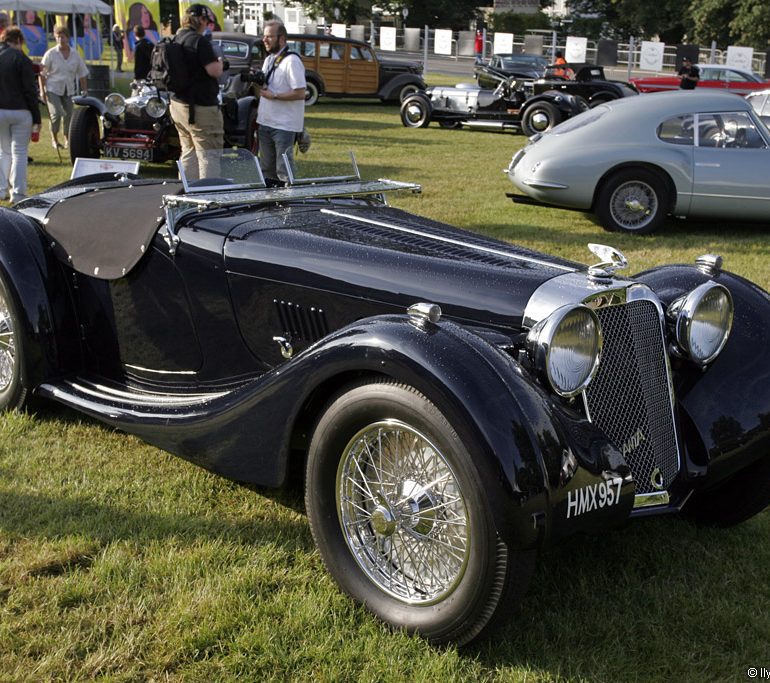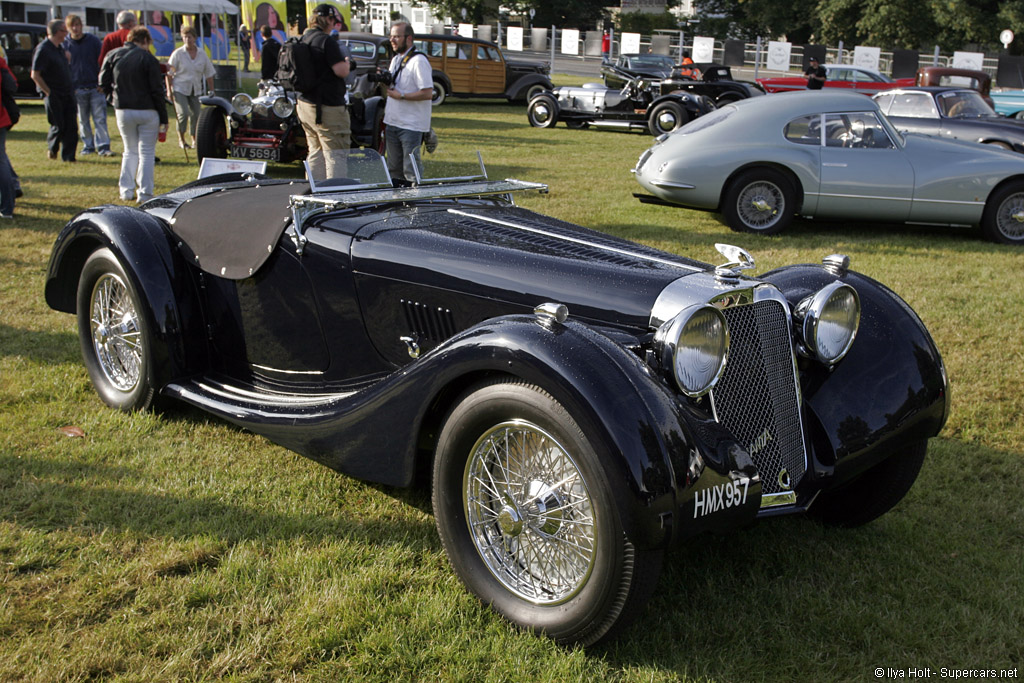1938 Atlanta Sports Abbots Roadster
At their 2007 Pebble Beach auction, Gooding & Company sold Atlanta chassis number 1011. The following is an exert of the catalog description:
Indirectly, it was the Germans who were responsible for the formation as well as the end of Atalanta cars. By 1934 Frazer Nash could see the life of its “Chain Gang” range was limited, and the Aldington family already had plans to assemble BMWs in Britain under license. Its investment, and the hard work of one employee, Alfred Gough, in a new overhead camshaft engine to replace the 4ED Meadows was set to be rendered obsolete by the brilliant Bavarian imports. Although the sophisticated Gough engine developed a reputation for unreliability, it still boasted a twin-plug ignition (by both coil and magneto) and chain-driven overhead camshaft -with the option of supercharging. Gough was convinced his engine deserved better and, together with his assistant Peter Crosby and Eric Scott from Specialloid Pistons, set about forming his own company to produce a Gough-designed car. Ironically, the company’s name came from a well-known Frazer Nash TT Replica christened “Atalanta.” Financing came from various sources: racing driver Peter Whitehead, Dennis Poore, Miss Midge Wilby as well as Tim Scott from Tim Birkins. With �20,000 capital, Atalanta started from a shed behind Dexter’s Cafe on Staines High Street until new premises were built in 1936 on London Road.
Atalanta production numbers are a bit of a mystery; so too are survivor numbers. It is rumoured that one other two-seater similar to this car exists but is in pieces, so this car can be considered very nearly unique. Other models built in the range were two-liter DHC and variants (i.e., saloon, FHC) powered by both Gough and Lincoln Zephyr engines. In all it is believed that approximately 20 cars were built before the company closed following heavy losses, and perhaps half of these survive. It is interesting to note that at a price of �750 the car cost twice as much as its contemporaries such as SS100 Jaguar, Riley Imp or even Aston Martin.
The new car’s chassis was a radical departure from British sports car standards. Gough went for a fully independent suspension that was light years ahead of its time and rivals, using exotic light weight metals such as Hiduminium for the uprights and Electron for the differential and large brakes. Like all Atalantas, other than the Bertelli Coupe, this short-chassis car was bodied by a well-known quality coachbuilder of the time. Abbots of Farnham. With one of the best looking sports car bodies of that era, reminiscent of the Squire, Alfa or SS100, the Atalanta retains a much more aggressive line -wider, lower and racier.
Painted in her favorite color of blue, this car was part of the three-car team run by factory patron Miss Midge Wilby who together with her team members Miss Joan Brotchie and Gordon Wilkins, was a regular feature on the British rally scene. They competed regularly in such events as the Scottish, RAC and Welsh Rallies, ultimately winning the team award on the latter event in 1939. Wilby had also entered one of the cars for the 1938 Le Mans race but unfortunately did not finish due to an accident.
The car has always had its totally original bodywork and running gear, but at some stage the original Gough engine blew up, and a Bristol engine was fitted and used in this form for many years by well-known Swiss enthusiast Werner Oswald. Its next owner fell in love with the car when he saw it at auction. He found the classic lines irresistible and impulsively purchased it, remaining resolute to bring it back to its original specification. One of the most difficult tasks was to find an original Gough engine, as these were never made in large numbers. It seemed as if it would be a luckless search, but fortuitously he found someone who was persuaded to part with their spare engine, numbered 1009 – only two numbers away from the original one.
TT Workshops was commissioned to rebuild the car in its entirety. It was a major rebuild and went well over budget, the final tally being approximately $250,000. This was carried out roughly 10 years ago, and on file are all the detailed bills and descriptions of work done. It immediately went on to win its class at the Louis Vuitton Concours D’Elegance at the Hurlingham Club in 1997.
Following the restoration, the Atalanta was recently invited to participate in the Cartier Style et Luxe Concours at the 2007 Goodwood Festival of Speed. Competition included 50 of the world�s finest cars in eight classes from all over the world. The best of show was bestowed on this stunning dark blue Atalanta. It remains ready and willing for show, touring or historic rallies. A true piece of automotive art.
Story by Gooding & Co.
In Detail
| submitted by | Richard Owen |
| engine | Gough Inline-4 |
| position | Front Longitudinal |
| displacement | 1996 cc / 121.8 in³ |
| front brakes | Lockheed Finned Drums |
| f brake size | x 406 mm / x 16 in |
| rear brakes | Lockheed Finned Drums |
| r brake size | x 406 mm / x 16 in |
| gear ratios | :1 |





